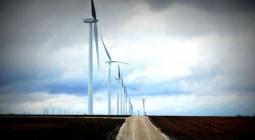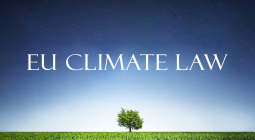Make RED III fit for 55% - EREF’s Policy Asks for reaching net-zero through: Renewables, Renewables and - Renewables

Aligning the EU’s climate targets with the Paris Agreement and the ambition to make Europe climate-neutral by 2050, requires revising existing – and designing new – ambitious policy and legal initiatives, as currently being developed under the European Green Deal. With EU leaders discussing at today’s special summit the fight against climate change, they seek to provide additional guidance to the Commission for its upcoming proposals – which are meant to help reach a binding EU target of a net domestic GHG reduction of at least 55% by 2030.
EREF reminds national and EU decision-makers that achieving this major objective of the recently agreed Climate Law requires effective decarbonisation of our energy, mobility and heating sectors. Setting higher targets, as well as robust frameworks that empower Member States to accelerate and simplify renewable energy development, will put Europe on track towards net-zero and substantially increase the RES share in Europe’s energy mix. This is why EREF President António Sá da Costa calls on the Commission, who is now in the process of amending the current Renewable Energy Directive (RED), “to deliver the most ambitious proposal – and make sure “RED III” deserves its name and promotes energy systems that are fossil free, sustainable, and run on: Renewables, Renewables and – Renewables”.
EREF, speaking out for Europe’s independent renewable energy producers for nearly 25 years, insists that climate action cannot be fierce nor vigorous enough. Consequently, EREF puts forward the following Policy Asks lawmakers should bear in mind when revising Renewables Energy Directive 2018/2001 as well as other existing legislation[1] – which would improve current frameworks and help deliver on the EU’s climate agenda:
- Set an EU-wide renewable energy target of at least 45% by 2030, required to reduce GHG emissions faster and further. We can do a lot better than just doubling the renewables’ share in Europe’s energy mix by the end of the decade and go far beyond the 38-40% which the Commission has assessed.
- Set binding targets for renewables at national level, for each Member State, will contribute to the effective implementation and enforcement of RED III.
- Set a 1.3% target of annual increase for renewables used in heating and cooling, with a new binding target of 1.1 percentage point annual increase and ban on fossil fuels in district heating and cooling. This includes disallowing any form of direct or indirect support to fossil fuels.
- Substantially increase the renewables target for transport, from 14% to at least 28 %, incl. a higher sub-target for advanced biofuels, from 3.5% to 5.5%, and the introduction of a dedicated supply obligation for aviation.
- Removal of persisting regulatory and administrative barriers – in terms of permitting procedures, auctions and tenders, as well as grid access. This forms a key requirement for renewable energy developers, as well as a large scale deployment of energy sharing and community energy models.
- Reinforce the rights and awareness of energy citizens, incl. through access to credible and transparent information on the energy mix and true origin of the energy they consume.
- Promote the further development of smart, integrated, flexible and decentralised energy systems that are a prerequisite for the transformation towards a renewable, secure, affordable and democratic energy future in the EU, connecting independent power producers, citizens and communities.
- Support schemes should incentivise additional renewable generation capacities, to supply, among others, the increasing demand for renewable hydrogen. Regardless, producing renewable hydrogen should not be put in competition with generating renewable electricity nor undermine renewable energy targets.
- Foster new and innovative renewable energy technologies that are being developed and entering the market, in order to optimise each technology’s performance (see also joint position paper)
- With greenhouse gases posing the largest single threat to biodiversity, climate change mitigation through renewable energy development should not be slowed down or even impeded by contrary environmental legislation. RED III should address and clarify inconsistencies between EU rules on energy and the environmental, respecting the priorities that should be driving the fight against climate change.
- In no way should RED III include provisions that incentivise or perpetuate the use of fossil fuels and nuclear energy. If we are serious about the Paris Agreement, there is simply no place for any “low-carbon alternatives”, behind which vested interests of incumbent carbon and nuclear technologies are used to hide.
In parallel, EREF urges the European Commission to have Member States consequently transpose and implement well-designed RED II[2] provisions that do not need revision and will reduce a number of barriers. These include for instance enabling frameworks for renewable self-consumers and energy communities, fast permitting procedures for renewable energies and the establishment of contact points that guide through entire administrative permit application and granting process.
EREF Director Dr. Dörte Fouquet underlines that “for us, the current pathway, as assessed by European Commission towards climate neutrality by 2050, is still too timid and burdening young generations with a toxic legacy, in Europe and beyond, in particular in developing countries”.
For more information, please contact
Dr. Dörte Fouquet Dirk Hendricks
EREF Director EREF Secretary General
doerte.fouquet@eref-europe.org dirk.hendricks@eref-europe.org
May 2021
EREF
EUROPEAN RENEWABLE ENERGIES FEDERATION





